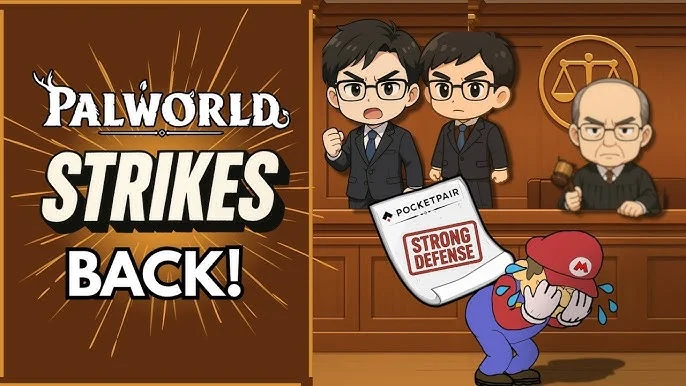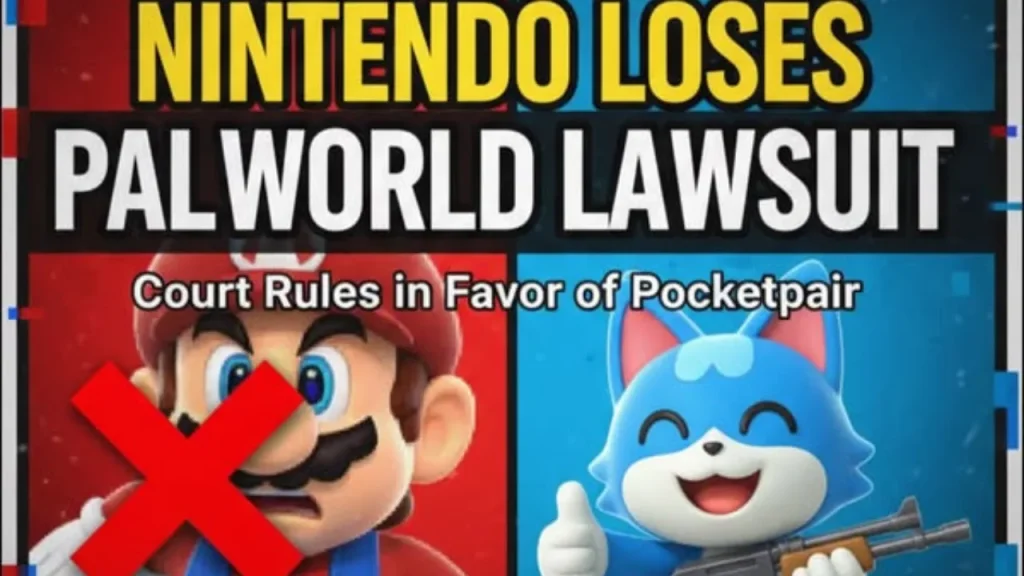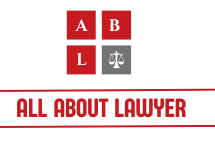Nintendo Suffers Major Blow in Palworld Lawsuit, Patent Office Rejects “Monster Capture” Patent as Unoriginal
Nintendo’s Palworld lawsuit suffered a devastating blow when Japan’s Patent Office rejected patent application no. 2024-031879 on October 22, 2025, ruling the “monster capture” mechanic lacks originality. The JPO examiner cited prior art including Monster Hunter 4, ARK: Survival Evolved, Kantai Collection, Pocketpair’s own Craftopia, and even Pokemon GO as games released before Nintendo’s December 2021 priority date. This rejected patent sits between two patents Nintendo is actively asserting against Palworld in Tokyo District Court, potentially undermining Nintendo’s entire legal strategy.
What Is Nintendo’s Palworld Lawsuit About?
Nintendo and The Pokemon Company filed a joint patent infringement lawsuit against Palworld developer Pocketpair on September 19, 2024, in Tokyo District Court. The lawsuit alleges Palworld infringes three Nintendo patents covering creature capture mechanics and rideable creature switching systems.
Nintendo seeks an injunction against infringement and compensation for damages, though the company is reportedly seeking relatively modest financial damages compared to the legal costs involved.
Palworld, dubbed “Pokemon with guns,” became a massive hit when it launched in January 2024, selling millions of copies within days. The survival-crafting game features creature-capture mechanics similar to Pokemon but adds firearms, base-building, and survival elements that distinguish it from Nintendo’s franchise.
Why Did Japan’s Patent Office Reject Nintendo’s Patent?
The JPO’s Notice of Reasons for Refusal stated that “the claimed invention(s) could have easily been made by persons who have common knowledge in the technical field”. In patent law, this means Nintendo’s claimed invention lacks an “inventive step”—it’s not sufficiently novel or non-obvious to warrant patent protection.
Games Cited as Prior Art:
- ARK: Survival Evolved – Features creature taming and capture mechanics
- Monster Hunter 4 – Includes creature capture and switching systems
- Kantai Collection – Browser game with collection mechanics
- Craftopia – Pocketpair’s earlier game with similar mechanics
- Pokemon GO – Nintendo’s own game demonstrating prior implementation
The decision followed an April 2025 third-party submission of prior art, which analysts suspect came from Pocketpair or a related party. This strategic submission provided the JPO examiner with comprehensive evidence that creature-capture mechanics existed in gaming long before Nintendo’s 2021 filing date.
How Does This Patent Rejection Impact Nintendo’s Lawsuit?
The rejected patent application no. 2024-031879 occupies a critical position in Nintendo’s patent strategy. It is the child of patent JP7493117 and the parent of JP7545191, both of which are cited in Nintendo’s complaint against Palworld.
Legal analyst Florian Mueller of GamesFray explained this “sibling-parent” structure makes the rejection potentially significant: if one member of the patent family lacks originality, it raises questions about the others.
Why This Matters:
The Tokyo District Court isn’t legally bound by JPO decisions, but judges often respect the technical findings of patent examiners, especially regarding prior art analysis.
If a central component of a patent family is struck down, related patents may face increased scrutiny or validity challenges. Pocketpair’s defense strategy contests the validity of all three Nintendo patents cited in the lawsuit.
The main lawsuit against Pocketpair continues at Tokyo District Court but is getting increasingly shaky. If more of Nintendo’s patents face rejections, it could drastically weaken their case.

What Are Nintendo’s Three Contested Patents?
Nintendo’s lawsuit centers on three Japanese patents:
Patent JP7493117 – Creature capture mechanics involving throwing objects to capture creatures or initiate battles.
Patent JP7545191 – Related creature-capture system implementations with variations on the throwing mechanic.
Patent JP7528390 – Real-time mount switching system allowing players to seamlessly switch between rideable creatures.
Nintendo amended patent JP7528390 in July 2025 during active litigation—an uncommon move that raised questions about the patent’s validity. The amendment request delayed proceedings, requiring parts of the case to be reexamined, and the lawsuit is now expected to extend well into 2026.
How Has Palworld Changed Because of the Lawsuit?
Pocketpair has made “disappointing” changes to Palworld as a result of Nintendo’s litigation. The company removed or modified mechanics that Nintendo claims infringe its patents while maintaining it disputes Nintendo’s claims and asserts the invalidity of the patents.
Changes Made to Palworld:
Palworld eliminated its Pal Spheres mechanic (the Poké Ball-like summoning system) and implemented changes to Pal guiding.
The latest patch (ver. 0.5.5) changed in-game gliding from riding on Pals to using a separate glider tool, though Pals still provide passive buffs.
Pocketpair stated: “We have had to make certain compromises… the alternative would have led to an even greater deterioration of the gameplay experience for players”.
Despite these changes, Pocketpair confirms it continues to dispute Nintendo’s claims and assert the invalidity of the patents in question.
What Is Pocketpair’s Defense Strategy?
Pocketpair filed extensive prior art evidence in April 2025, citing dozens of games that predate Nintendo’s patents and feature similar mechanics.
Games Cited in Pocketpair’s Defense:
- Legend of Zelda titles (Nintendo’s own games)
- ARK: Survival Evolved
- Tomb Raider
- Titanfall 2
- Monster Hunter series
- Minecraft mods (Pixelmon)
- Fallout 4 mods (NukaMon)
Pocketpair argued that player-created content like mods is part of the shared creative ecosystem that predates Nintendo’s claims. Nintendo controversially tried to claim that mods shouldn’t count as prior art—an unusual position that drew criticism for attempting to limit what qualifies as “publicly known” technology.
Pocketpair’s defense strategy, built on citing prior games like ARK and Monster Hunter, is paying off, as evidenced by the JPO’s rejection of Nintendo’s patent application using similar reasoning.
What Happens Next in the Nintendo Palworld Case?
Nintendo has 60 days from the October 22 rejection notice to amend its application or appeal the decision, giving it until late December 2025 to respond.
Nintendo’s Options:
Amend and Refile – Nintendo can submit amendments to the patent claims, trying to distinguish them from cited prior art. However, the breadth of games cited makes this challenging.
Appeal to IP High Court – Nintendo can appeal the JPO decision to Japan’s Intellectual Property High Court, though this would further delay the process and require overcoming the examiner’s prior art findings.
Continue with Remaining Patents – Since the rejected application isn’t directly cited in the lawsuit, Nintendo can continue pursuing the case with its two remaining asserted patents—though their validity is now under increased scrutiny.
The Tokyo District Court case has yet to make its way to trial, and legal experts expect proceedings to extend well into 2026 due to Nintendo’s mid-litigation patent amendments and the complexity of the validity challenges.
Could This Case Expand to the United States?
Nintendo has had three patent applications approved in the US in recent months: no. 12179111 in December 2024, 12194382 in January 2025, and 12220638 in February 2025.
Two of these US patents specifically detail creature-catching mechanics filed after Palworld’s launch and appear integral to the Japanese lawsuit. This suggests Nintendo may be preparing to bring the lawsuit to US courts if the Japanese case continues to face difficulties.
However, in December 2024, the USPTO rejected 32 out of 33 claims in Nintendo’s application no. 18652883 for a real-time mount switching system, with only one claim deemed patentable if filed separately. Nintendo’s US patent strategy is encountering similar originality challenges as its Japanese filings.

What Does This Mean for the Gaming Industry?
The JPO’s rejection sends a powerful signal about gaming industry standards and the limits of patenting gameplay mechanics.
Precedent for Game Developers:
The ruling reinforces that common gameplay mechanics shared across multiple games cannot be retroactively claimed by one company through patents. This protects indie developers from patent trolling by major publishers.
Creature-capture mechanics, mount-switching systems, and similar gameplay features are now demonstrably part of the shared creative commons of game design, predating any single company’s patent claims.
Industry Concerns About Patent Abuse:
Nintendo’s attempt to patent “monster capturing” was always going to be a longshot, considering how many games already use similar features before December 2021. The gaming community has expressed concern that allowing such patents would stifle creativity and harm indie developers.
Nintendo has to prove to a court that its patents give it the right to produce the only monster-capture games out there, and it’s having a hard time doing so.
The case highlights ongoing debates about whether game mechanics should be patentable at all. Many legal experts and developers argue that patenting gameplay systems restricts innovation and harms the industry’s creative ecosystem.
What Are the Financial Stakes?
Nintendo is seeking relatively low damages given the scope of the case, which could mean the company ends up spending far more money on legal fees than it gains from any potential victory.
The lawsuit appears motivated more by protecting Nintendo’s perceived market dominance than by financial recovery. By forcing Palworld to remove key mechanics, Nintendo may be attempting to reduce competition regardless of the litigation’s outcome.
Meanwhile, Palworld remains commercially successful and available on multiple platforms including Xbox Game Pass, PC, and PlayStation. The game continues to receive major updates and has a Palworld 1.0 release planned for 2026 with significant new content.
Has Nintendo Modified Patents During the Lawsuit?
Nintendo moved to amend patent JP7528390 in the middle of the Palworld lawsuit in July 2025—an uncommon step that suggests internal doubts about the patent’s strength.
Legal analyst Florian Mueller noted that amending a patent during active litigation is uncommon, and the vague language used in the proposed amendment was even more unusual.
The Japan Patent Office approved the amendment, which reformulated existing content using longer, more detailed language without introducing new technical subject matter. However, the mid-litigation amendment raised eyebrows in the legal community and delayed case proceedings.
Critics argue that filing new patents and amending existing ones after Palworld’s release gives Nintendo an unfair advantage, allowing the company to retroactively claim protection over mechanics they didn’t originally patent.
What Is the Current Status of the Lawsuit?
Timeline of Key Events:
January 2024 – Palworld launches, selling millions of copies within days.
September 19, 2024 – Nintendo and The Pokemon Company file patent infringement lawsuit in Tokyo District Court.
December 2024 – Palworld removes Pal Sphere summoning mechanic.
April 2025 – Third-party (suspected to be Pocketpair) submits prior art to JPO challenging Nintendo’s pending patents.
May 2025 – Palworld announces additional “disappointing” changes including removal of rideable gliding.
July 2025 – Nintendo amends patent JP7528390 during active litigation.
October 22, 2025 – JPO issues Notice of Reasons for Refusal rejecting Nintendo’s patent application no. 2024-031879.
October 2025 – Legal experts predict case will extend well into 2026.
Late December 2025 – Deadline for Nintendo to respond to JPO rejection with amendments or appeal.
The case has yet to reach trial in Tokyo District Court, with no trial date currently set.
Can Nintendo Still Win This Lawsuit?
There’s a path forward for Nintendo, but the company currently has the deck stacked against it. The JPO’s rejection of a key patent in Nintendo’s family structure raises serious questions about the validity of all three patents asserted in the lawsuit.
Patent law is complicated, and Nintendo’s three contested patents are intertwined in such a way that denying one could upset the entire case. Judges may view the JPO’s technical findings as persuasive even though they’re not legally binding on the Tokyo District Court.
Presiding Judge Motoyuki Nakashima is not bound by the JPO’s decision, but it might influence his decision-making, particularly on questions of patent validity and originality.
Pocketpair has consistently maintained that it did not infringe Nintendo’s patents and that those patents are invalid. The JPO’s rejection of Nintendo’s related patent application substantially strengthens this defense.
What Should Game Developers Learn from This Case?
Document Prior Art Thoroughly: Pocketpair’s success in challenging Nintendo’s patents came from comprehensive prior art submissions showing similar mechanics existed for years before Nintendo’s filing dates.
Challenge Invalid Patents: The gaming industry benefits when developers challenge overly broad patents that attempt to claim common gameplay mechanics as proprietary inventions.
Understand Patent Families: Related patents in the same family can support or undermine each other. Attacking one branch of a patent family may weaken the entire structure.
Monitor Patent Applications: Third-party submissions to patent offices can provide crucial evidence that examiners might not discover independently.
Preserve Creative Commons: The shared language of game design—common mechanics, interfaces, and systems—should remain available to all developers rather than being monopolized through patents.
For guidance on intellectual property protection in gaming, see our articles on business litigation law, contract breach disputes, and intellectual property breach of contract attorneys.
FAQs About Nintendo’s Palworld Lawsuit
Has Nintendo lost the Palworld lawsuit?
No, Nintendo has not lost the lawsuit—the case is still ongoing in Tokyo District Court with no trial date set. However, Nintendo suffered a major setback when Japan’s Patent Office rejected a key patent application on October 22, 2025, ruling it lacked originality. This rejection potentially undermines Nintendo’s entire case.
What patents is Nintendo suing Palworld over?
Nintendo and The Pokemon Company are suing over three Japanese patents: JP7493117 and JP7545191 (creature capture mechanics) and JP7528390 (real-time mount switching). All three patents allegedly cover game mechanics that Palworld uses.
Why did Japan’s Patent Office reject Nintendo’s patent?
The JPO ruled that Nintendo’s “monster capture” patent application lacks an inventive step, meaning it’s not sufficiently novel or non-obvious. The examiner cited prior art including ARK: Survival Evolved, Monster Hunter 4, Craftopia, Kantai Collection, and even Pokemon GO as games that used similar mechanics before Nintendo’s 2021 filing date.
What changes has Palworld made because of the lawsuit?
Palworld removed its Pal Spheres mechanic (similar to Poké Balls), changed its creature-guiding system, and replaced rideable gliding with a separate glider tool. Pocketpair has described these changes as “disappointing compromises” made during litigation, though they continue disputing Nintendo’s claims.
Can Nintendo appeal the patent rejection?
Yes. Nintendo has 60 days from the October 22, 2025 rejection notice (until late December 2025) to amend its patent application or appeal the decision to Japan’s Intellectual Property High Court. However, overcoming the comprehensive prior art cited by the JPO examiner will be challenging.
Will this lawsuit affect other Pokemon-style games?
If Nintendo loses or abandons this lawsuit, it would set precedent that common creature-capture and mount-switching mechanics cannot be monopolized through patents. This would protect other developers creating games with similar features. The outcome significantly impacts whether gameplay mechanics remain part of gaming’s creative commons.
When will the Nintendo Palworld case go to trial?
The Tokyo District Court case has not yet reached trial. Legal experts predict proceedings will extend well into 2026 due to Nintendo’s mid-litigation patent amendments, the JPO’s rejection of related patents, and the complexity of validity challenges. No trial date is currently scheduled.
Legal Disclaimer: This information is for educational purposes only and does not constitute legal advice. The Nintendo v. Pocketpair lawsuit is ongoing with developments occurring regularly. Consult an attorney specializing in intellectual property or gaming law for legal guidance specific to your situation.
Last Updated: October 31, 2025
About the Author

Sarah Klein, JD, is a licensed attorney and legal content strategist with over 12 years of experience across civil, criminal, family, and regulatory law. At All About Lawyer, she covers a wide range of legal topics — from high-profile lawsuits and courtroom stories to state traffic laws and everyday legal questions — all with a focus on accuracy, clarity, and public understanding.
Her writing blends real legal insight with plain-English explanations, helping readers stay informed and legally aware.
Read more about Sarah
